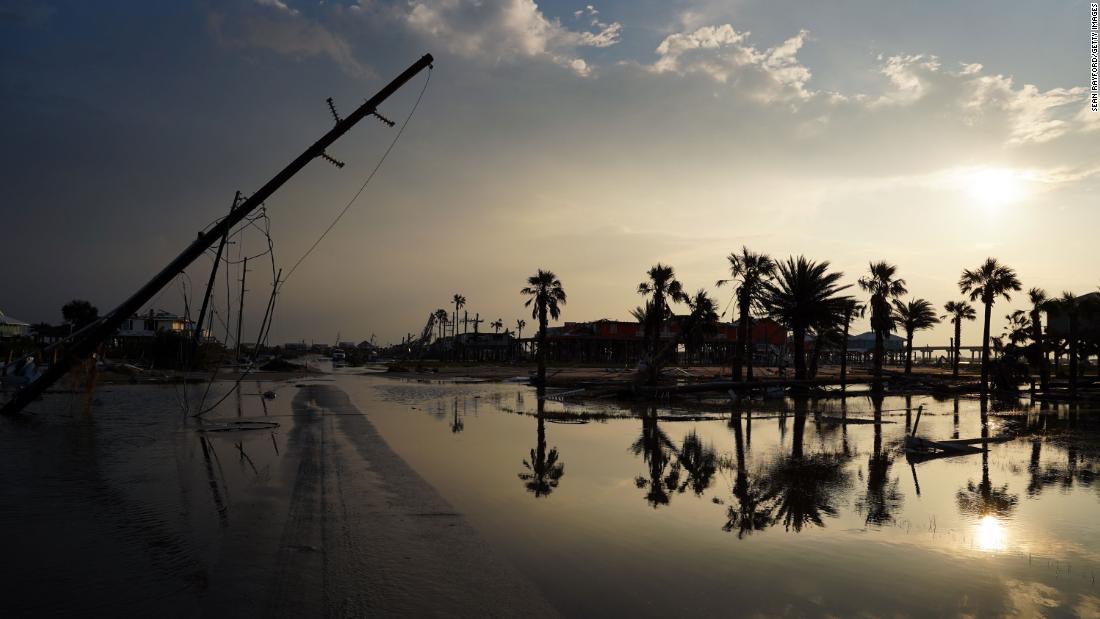
“Electricity is one of the biggest challenges we have in southeast Louisiana … There’s no uniform pace of restoration, and it always will be. I’m always happy to see people turn on and some people will go pretty time, ”Louisiana Gov. John Bel Edwards said Saturday.
The total number of customers without electricity at noon on Saturday was 718,559, which includes homes and businesses that equate to “many more” people, Edwards said at a news conference in Livingston parish. That fell to a maximum of 1.1 million customers without electricity after the Category 4 hurricane made landfall last Sunday.
Edwards said the electrical infrastructure needs reinforcement, but there are limitations.
“I find it hard to imagine that we will ever have an electrical infrastructure (or other types of infrastructure as well) that can withstand a storm of this severity without interruptions. But we know we can minimize those interruptions,” Edwards said.
Doing so, however, will require a large investment that will pay off over time, Edwards said.
“Especially if you consider that not only does it increase the severity of these weather events, but it increases the frequency of these weather events,” he said. Louisiana has been hit by five hurricanes in 368 days, Edwards noted.
“We can’t continue to get things back to the current norm,” he said.
The lack of energy is so unbearable that Saturday New Orleans began sending people deprived of electricity to shelters with electricity in northern Louisiana and Texas. The new shuttle program picks up people from the city’s convention center by charter bus.
“We’re doing everything we can to speed up your relief,” Edwards said as he asked for patience from those affected by Ida.
Twelve people died in Louisiana from the impact of the storm – four from carbon monoxide poisoning, Edwards said, urging people to be careful when using generators.
“That doesn’t taste good, it’s odorless and you don’t know what happens until it’s too late,” Edwards said, referring to carbon monoxide.
Gas is scarce as people wait hours to fill up
Long lines began to form Saturday morning hours before a gas station opened in downtown New Orleans.
A day earlier, Eric Mertz drove 20 miles from his home, in the neighboring parish of St. Charles, to wait for gas outside a New Orleans gas station, where he believed the lines were shorter than those near his home.
Still, he waited hours.
“I just wonder where the help is,” Mertz said Friday. “I don’t have air conditioning. There are no lights. I had Covid last year. I was in the ICU for 14 days and I’m on oxygen (treatments now). And I don’t have electricity, it’s hard.”
Many gas stations do not run or do not have fuel, and those that do have people waiting for hours outside them. Many want gasoline to power their vehicles, some to get out of the region and some just to use their cars as air-conditioned places to rest. Others want to power their generators at home to maintain electricity.
In one case, a gas dispute turned deadly when a man waiting for gas on Friday was shot dead, apparently after confronting a man who cut the line at a gas station in Metairie, he said. the sheriff of Jefferson parish, Joseph Lopinto.
A suspect became Friday night, Lopinto said in a briefing on Saturday. He asserted self-defense, “which does not match any witness witness,” the sheriff said.
Preliminary information indicates that the suspect jumped the gas line “and was confronted by the person who cut it,” Lopinto said. The suspect returned to his car, recovered a weapon and fatally shot the victim, Lopinto added.
The sheriff called for patience with the bombs.
“(We don’t have) enough cops on the street to sit at every gas station to play babysitter,” he said. “We need people to act like adults.”
“Not a neighborhood that has been saved,” says a local official
Specifically, the Metairie and Kenner communities are experiencing widespread destruction, he said.
“We had wind damage everywhere,” Impastato said in the video. “There’s no neighborhood that has been saved, there isn’t a street that has been saved, there is no neighborhood that doesn’t have a lot of power dust divided,” Impastato said.
Boiling water advice in the parish comes from the power cuts, he said. Impastato estimated that about 80% of damaged homes are relatively livable in Jefferson.
“This will speed up that recovery (and) make it very manageable to get back to where we were,” Impastato said.
Meanwhile, Terrebonne parish officials are urging residents to limit water use due to power outages to the parish sewer system.
CNN’s Kay Jones, Melissa Alonso, Jason Hanna and Travis Caldwell contributed to this report.